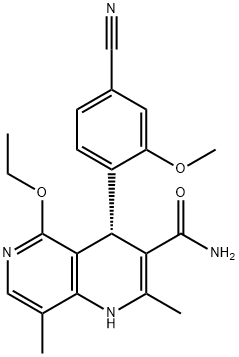
Tetrahydrocurcumin synthesis
- Product Name:Tetrahydrocurcumin
- CAS Number:36062-04-1
- Molecular formula:C21H24O6
- Molecular Weight:372.41
One gram (1.0 g) of curcumin was dissolved in 20 ml of acetone and placed in a 100-ml glass reactor for reduction, to which was then added 500 mg of activated Raney-nickel catalyst. Subsequently, the atmosphere of the reactor was replaced for hydrogen gas by the routine method. A rubber-made balloon filled with hydrogen gas was arranged on the upper portion of the reactor in order to keep hydrogen gas pressure constant in the reactor by supplying hydrogen gas to make up for the consumed amount of hydrogen gas. The reactor was stirred while maintained at a given temperature in a constant-temperature water bath kept at 30° C. for 2-hour reduction.
After completion of the reaction, the Raney-nickel catalyst was removed from the solution by filtering, which was then evaporated and dried by concentration under reduced pressure and was dissolved again in a small amount of acetone.
Subsequently, the eluate was concentrated and dried under reduced pressure to obtain 674 mg of tetrahydrocurcumin.
Method for making tetrahydrocurcumin and a substance containing the antioxidative substance tetrahydrocurcumin

458-37-7
910 suppliers
$5.00/250mg

36062-04-1
357 suppliers
$17.00/250mg
Yield:36062-04-1 98%
Reaction Conditions:
with palladium on activated charcoal;hydrogen in propan-2-one; for 12 h;Reagent/catalyst;Solvent;
Steps:
1-9; 1-4 Example 1
In a 100 mL dry round-bottomed flask, 8.3 g of curcumin and 0.4 g of palladium/carbon were added, and vacuumed. Fill two balloons with hydrogen, then insert into the flask to create a hydrogen atmosphere. 60 mL of acetone was added to the flask, and the reaction was stirred at room temperature for 12 h. After the reaction was completed, TCL was used to check whether the reaction was complete. Filtration, washing with acetone, then rotary evaporation to remove acetone, and then adding ethanol for recrystallization to obtain a white powder, namely tetrahydrocurcumin, with a yield of 98% and a purity of 99.6%.
References:
CN114031488,2022,A Location in patent:Paragraph 0029-0063
![3,5-Heptanedione, 1,7-bis[4-(acetyloxy)-3-methoxyphenyl]-](/CAS/20200611/GIF/52199-86-7.gif)
52199-86-7
1 suppliers
inquiry

36062-04-1
357 suppliers
$17.00/250mg

458-37-7
910 suppliers
$5.00/250mg

1050477-31-0
226 suppliers
inquiry

36062-04-1
357 suppliers
$17.00/250mg

123-54-6
578 suppliers
$10.00/25ml

36062-04-1
357 suppliers
$17.00/250mg

1135-23-5
143 suppliers
$23.00/1g

36062-04-1
357 suppliers
$17.00/250mg